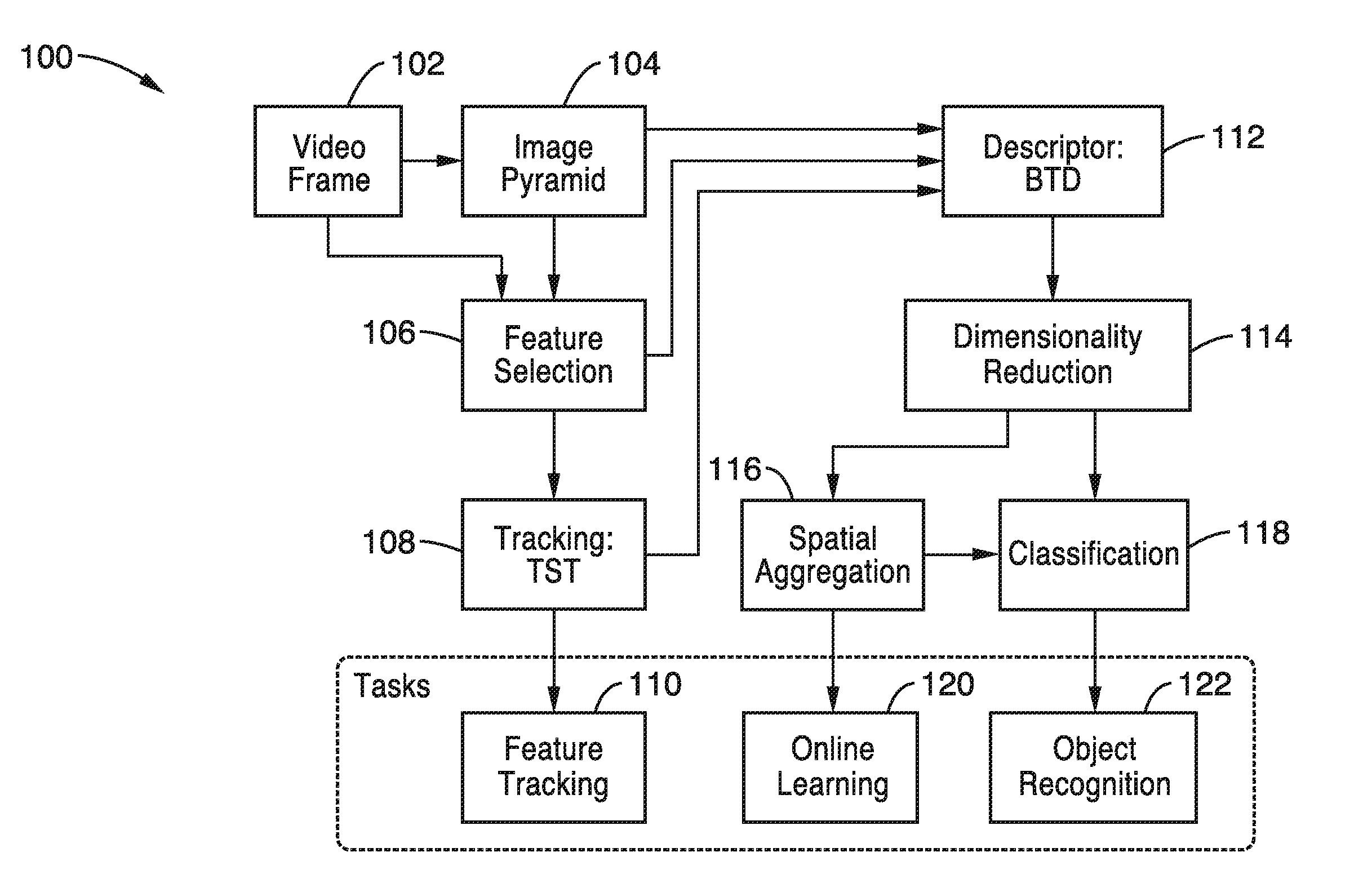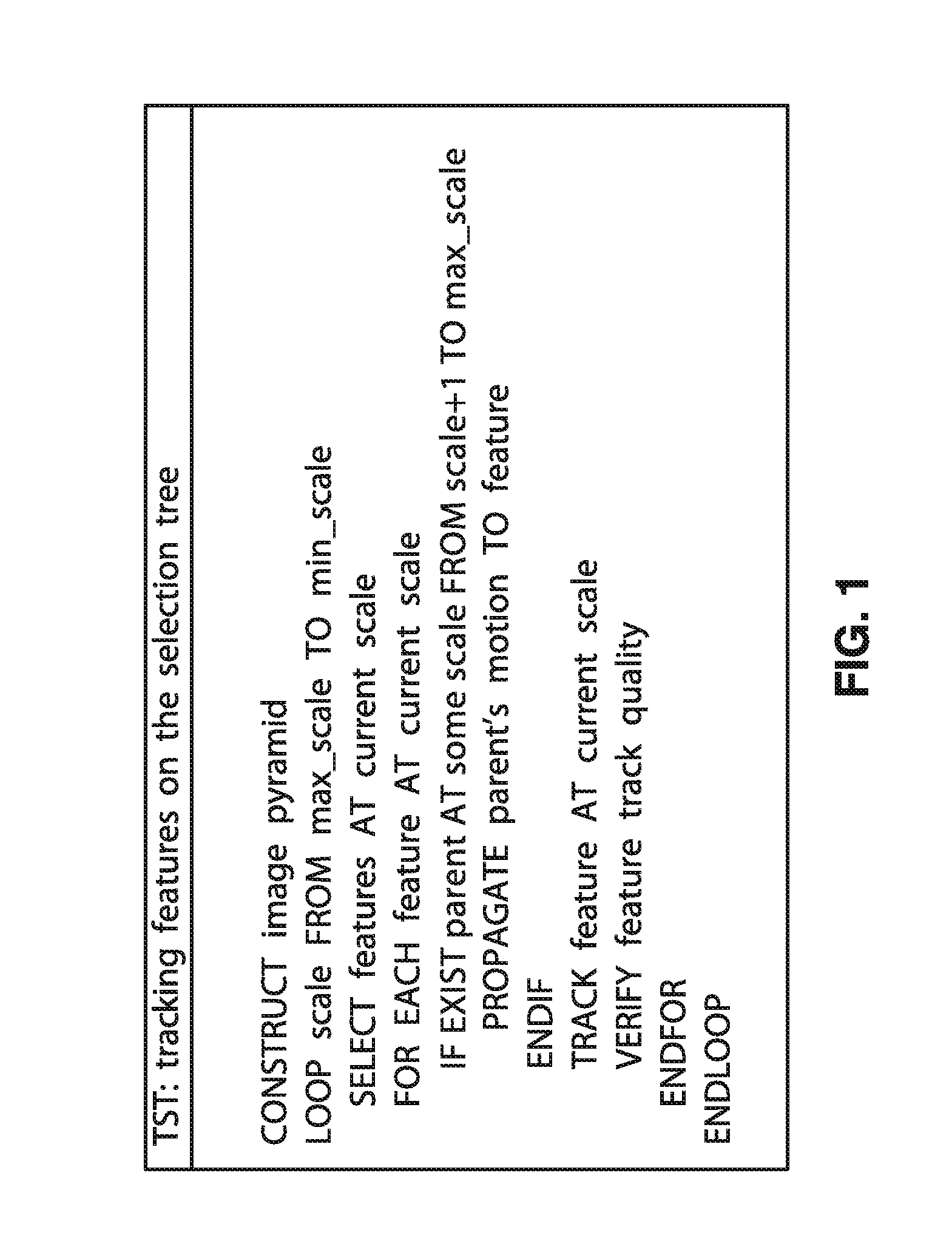End-to-end visual recognition system and methods
a visual recognition and end-to-end technology, applied in the field of visual recognition, can solve the problems of reducing the quality of visual proper registration of information, unable to utilize the vision capability of such devices, and no understanding or relation to the actual scen
- Summary
- Abstract
- Description
- Claims
- Application Information
AI Technical Summary
Benefits of technology
Problems solved by technology
Method used
Image
Examples
example 1
[0084](Translation-scale group). By way of example, and not of limitation, consider the set of images, intended as functions from the real plane to the positive reals, approximated by a sum of Gaussians. The image is then represented by the centers of the Gaussians, μi, their covariance σi2 and the amplitudes αi, so that I(x)=ΣiαiG(x−μi;σi2). Consider a detection mechanism that finds the extrema ĝ={{circumflex over (x)},σ} of the image convolved with a Gaussian centered at {circumflex over (x)}, with standard deviation σ: ψ(I,ĝ)=I*∇G(x−{circumflex over (x)};σ2)=0. Among all extrema, consider the two {circumflex over (x)}1, {circumflex over (x)}2 that are closest. Without loss of generality, modulo a re-ordering of the indices, let μ1 and μ2 be the “true” extrema of the original image. In general {circumflex over (x)}1≠μ1 and {circumflex over (x)}2≠μ2. Let the distance between μ1 and μ2 be d=|μ2−μ1|, and the distance between the detected extrema be {circumflex over (d)}=|{circumflex ...
PUM
 Login to View More
Login to View More Abstract
Description
Claims
Application Information
 Login to View More
Login to View More - R&D
- Intellectual Property
- Life Sciences
- Materials
- Tech Scout
- Unparalleled Data Quality
- Higher Quality Content
- 60% Fewer Hallucinations
Browse by: Latest US Patents, China's latest patents, Technical Efficacy Thesaurus, Application Domain, Technology Topic, Popular Technical Reports.
© 2025 PatSnap. All rights reserved.Legal|Privacy policy|Modern Slavery Act Transparency Statement|Sitemap|About US| Contact US: help@patsnap.com



